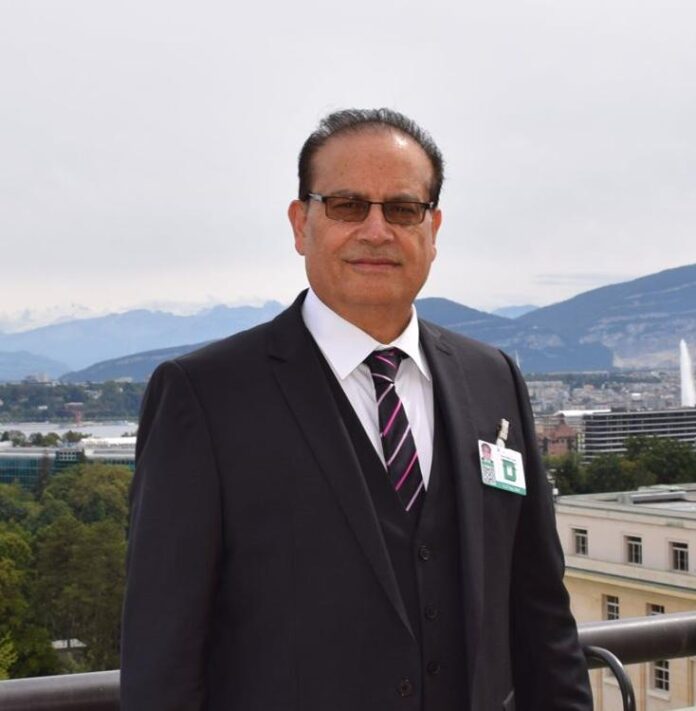By Qamar Bashir
Former Press Secretary to the President
Former Press Minister to the Embassy of Pakistan to France
Former MD, SRBC
If we enhance the fiscal account, ensure sustainability of external accounts, achieve growth, rebase our GDP, initiate domestic debt profiling, gain favorable decisions in reducing debt burdens from the IMF-led roundtable conference of debt and creditors, receive support from developing countries and multinational institutions for aiding debt-stressed nations, witness bilateral creditors rolling over their deposits, and successfully transform loss-making SEOs into profit-making entities, we will gradually meet our debt repayment obligations.
During a recent prime time TV interview, Dr. Shamshad Akhtar skillfully addressed Pakistan’s challenging financial and economic circumstances with a composed and professional demeanor. She adeptly covered various facets of the country’s financial challenges, aiming to conclude each aspect on a positive and optimistic note. However, her emphasis on numerous conditions for improving the country’s financial outlook might lead one to believe that success could only be achieved with divine intervention.
She said that we are facing a formidable challenge of debt repayment which has become almost unmanageable but at the sametime said that since most of our loans are multilateral, bilateral and domestic, given that we practice prudent, creative and intelligent financial and economic management, we will end up fulfilling all our commitments.
While discussing multilateral loans, she highlighted that 45% of our debt is owed to multinationals. She mentioned the possibility of these loans being written off, suspended, or rescheduled by the G-20, offering much-needed relief. However, she noted that currently, multilateral entities are not inclined to provide further debt relief, suspension, or waivers. During the COVID-19 pandemic, G-20 nations suspended the debts of approximately 60 debt-stressed countries, and Pakistan was the primary beneficiary. She expressed regret that the funds allocated for debt repayment were utilized for non-development expenditures.
She highlighted bilateral sources as the second debt category, noting its relatively smaller volume. Pakistan is currently engaged in negotiations with bilateral donors and creditors to renegotiate deposits and loans based on the nation’s commendable track record of adhering to terms and conditions. Addressing criticism of China for creating debt traps, she defended China’s assistance to Pakistan. She emphasized that Chinese loans, compared to those from other nations, are minimal. Additionally, China extended the maturity period of its $2.4 billion loans and adjusted payment schedules to more favorable terms agreed upon later. Regarding the maturation of the euro bond in April 2024, preparations are underway to secure financing and offset this debt.
As a consequence, she highlighted the alarming situation where our debt repayment has become unmanageable, leading to a breach of the Fiscal Responsibility and Debt Management Act. Expressing concern, she revealed that our debt, in terms of government revenue, has surpassed 700%. This alarming ratio indicates that three-quarters of the government’s total income is allocated solely to debt repayment, leaving only one-third of the income to cover the country’s operational expenses. Despite this grim scenario, she asserted that the government is collaborating with creditors to extend the maturity of debts, lower borrowing costs, and most importantly, intends to introduce debt trading on the stock exchange. This move aims to widen and deepen the market for debts, ultimately alleviating the burden on the government caused by the debt.
On another note, she mentioned that due to the government’s concentrated efforts, the exchange rate is showing a downward trend, indicating the potential for economic growth in the upcoming years. This optimistic outlook suggests a potential reduction in the debt burden, an expansion in our financial reserves, and an increased capability to honor our debts. Concurrently, reforms within the Federal Board of Revenue (FBR) are anticipated to enhance tax collection, providing us with increased flexibility to address local liquidity needs and bolster our capacity to repay loans.
She emphasized Foreign Direct Investment (FDI) as a crucial avenue for rapidly enhancing liquidity within the country and while acknowledging the efforts of the SIFC in attracting FDIs, she cautioned that significant domestic efforts were necessary to complement these endeavors pointing that hindrances such as bureaucratic inefficiencies, outdated policies, regulatory complexities, legal gaps, a prevalent culture of corruption, and obsolete work practices were the primary obstacles to attracting FDIs. She stressed the urgent need to revamp policies, streamline processes, and cultivate a business environment that actively courts investors. Without these reforms, the aspiration of drawing and retaining investors would remain unattainable.
She acknowledged Pakistan’s low saving-to-GDP ratio and highlighted the issue of regressive taxation on savings as an unfair practice and attributed this taxation to the Federal Board of Revenue’s (FBR) inability to effectively collect direct taxes, leading to a shortfall. While taxing savings might seem necessary to cover the deficit, it unfairly burdens those investing in National Saving Centres but asserts that this practice will persist until substantial enhancements are made to the FBR’s capacity. This was indeed an honest admission but at the same very painful and aggressive for the investors in the saving schemes who are mostly pensioners, aged persons, widows or dependents. This taxation is also in contrast to various incentives offered by many other countries to motivate the people to invest in national saving. Contrary to the practice in Pakistan the depositors in other countries are offered incentives, and tax breaks. Singapore’s Central Provident Fund (CPF) offers various savings schemes with incentives, sheds light on alternative approaches. Singapore’s CPF provides attractive interest rates, tax relief benefits, and even government-matched contributions, encouraging a culture of savings. Incentives like these can promote savings and address issues related to regressive taxation by making savings more appealing while providing relief for contributors, thereby fostering a healthy savings culture.
Taxing savings to address revenue shortfalls might hinder long-term economic growth. A more balanced approach involves policy reforms, improved tax administration, and enhanced compliance measures, reducing overreliance on taxing savings. By expanding direct tax collection mechanisms and reforming policies, governments can avoid burdening savers while ensuring fair and sustainable revenue collection, as witnessed in countries with successful saving schemes.
She said that the caretaker government has prioritized protecting depositors’ interests, identifying a disparity between banks’ profits and the benefits provided to depositors. Despite banks’ significant earnings from increased interest rates, depositors weren’t receiving proportionate benefits. After persistent efforts, scheduled banks, excluding Islamic Banks, began offering better returns to depositors. However, Islamic Banks lag behind in providing equitable profits to their depositors. Consequently, the government, in collaboration with the State Bank, is engaging with Islamic Banks to ensure fairness in returns to depositors, emphasizing a commitment to equitable treatment across the banking sector.
She highlighted the implications of the 18th amendment, noting that the federal government now solely collects taxes but transfers the revenue to provinces, which are not obligated to collect taxes themselves. She emphasized the necessity for collaborative efforts to devise a mechanism enabling provinces to take on a role in tax collection, advocating for a shared responsibility framework to address taxation more effectively.
In discussing the privatization of loss-making government-owned enterprises, she highlighted the establishment of the Sovereign Wealth Fund through a parliamentary act during the previous session. This fund operates under a council led by the Prime Minister and is intended to accommodate several State-Owned Enterprises (SOEs). Presently, the fund is engaged in auditing these enterprises and is dedicated to enhancing their financial, economic, and managerial viability.
A critical element for this fund is the appointment of competent and qualified apolitical advisors to form an advisory council. This council, in turn, will appoint a Board of Directors (BOD), responsible for appointing a CEO. The CEO, under the guidance of the BOD, will assess the financial, economic, and managerial status of each entity within the fund’s purview.
The comprehensive review of Pakistan’s financial landscape underscores the intricate challenges the country faces in managing its debt, reforming tax policies, and attracting investments. The analysis reveals a multi-faceted approach required for financial stability, including debt restructuring, enhanced tax collection, and fostering an investor-friendly environment. While acknowledging the efforts made, there’s a resounding call for systematic reforms to alleviate the burden on various fronts, such as debt repayment, regressive taxation on savings, and revitalizing loss-making state-owned enterprises. The pivotal role of collaborative efforts, policy enhancements, and transparent governance emerges as crucial pillars for achieving sustainable economic growth and navigating the intricate web of financial intricacies in Pakistan’s journey ahead.

















